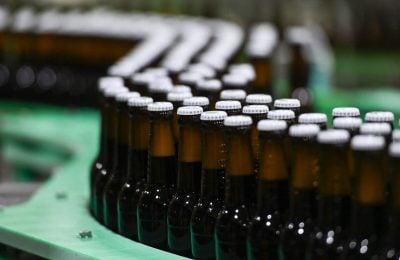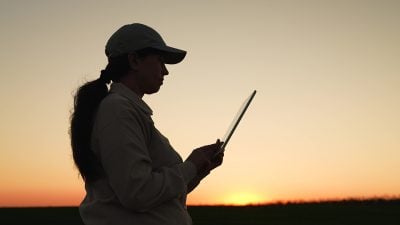Earlier this year Africa’s illegal wildlife trade took an unprecedented new turn. Deep in the dense tropical jungle of the Democratic Republic of Congo (DRC) a giant pangolin – an endangered species of mammal with plate-like scales that can weigh up to 30kg – was kidnapped by rebels who demanded a $500 ransom.
A roaming ground for lions, critically endangered silverback gorillas and anti-government militias, the Virunga rainforest has gained repute as one of the deadliest parks on earth. Last year seven park rangers were shot dead by armed groups in the park. In the previous year, 13 rangers were killed in a rebel ambush.
Two weeks of negotiations with the pangolin’s hostage-takers ended with radio silence, says Adams Cassinga from Conserv Congo, an organisation fighting wildlife trafficking in the DRC that was involved in the rescue effort.
“We tried to sweet talk them to come out and eventually on the 14th day there was an altercation between this group and another armed group and they had to move into the deep jungles and that’s how we lost contact,” he tells African Business. “I think it got eaten.”
Multibillion dollar industry
Congo is ground zero for the illegal African wildlife trade, with the Congo basin rainforests serving as a haven to some of most endangered species on the planet, including pangolins, elephants and apes.
“The DRC is really the final frontier when it comes to wildlife in Africa because we have species and subspecies which haven’t even been discovered because of insecurity, armed groups and inaccessibility into the forests,” Cassinga says.
Home to the world’s second biggest tropical rainforest after the Amazon, stretching across six central African countries, it is also the starting point of a trade route for wildlife trafficked to the Middle East and Asia.
“[The DRC] is definitely an origin point for a lot of wildlife trafficking, because a lot of iconic species are there, including primates and other species,” says Jean Fleming, communications manager at the Pan African Sanctuary Alliance (PASA), an association of 23 wildlife sanctuaries in 13 countries.
A World Bank report estimates that the illegal wildlife trade is worth $7bn-$23bn a year globally. “It’s a multibillion-dollar industry – not just from Africa but from around the world, but Africa’s a big part of that. It needs to be treated accordingly,” says Fleming.
Illegal trade moves online
Since the onset of Covid, the illicit African wildlife trade has been slowed down. As people increasingly sought to avoid physical contact during the pandemic, traffickers switched from large in-person shipments to smaller transactions brokered on online marketplaces or the dark web.
The internet, from Facebook pages to independent platforms and the dark web, has now become a global bazaar for the exotic wildlife trade selling anything from big cats to parrots.
“During Covid the illegal trade, like other illegal trades, moved online. And when you trade online you can only send small amounts of product through customs,” says Didi Wamukoya, an environmental lawyer and director of Counter Wildlife Trafficking at the African Wildlife Foundation (AWF).
“You cannot sell nine tonnes or even one tonne of ivory online, you can only sell small items carved out of ivory online. You cannot sell 250 parrots online, you can only sell one or two maximum,” says Cassinga.
Pandemic impacts smuggling and poaching
Grounded flights and international travel bans brought on by Covid also served to disrupt the trade and led to the stockpiling of wildlife cargoes.
“Because buyers from foreign countries can’t move around freely there is an issue for transportation and documentation for travelling. They’re desperate for money they’ve invested in this stock and it’s not yielding the profit they anticipated.”
East and Southeast Asia, the end-point for many African wildlife products, recorded a 50% drop in smuggling in 2020, according to USAID’s Counter Wildlife Trafficking Digest in 2021.
Seizures of pangolin parts in China, Laos, Vietnam and Thailand almost halved from 82 in 2019 to 48 in 2020, while the total volume of seizures fell sharply from 156 tonnes of pangolin products in 2019 to 10 tonnes in 2020. Over the same period, seizures of ivory, most of which took place in China, fell by 68%, from 380 to 121.
But the trend is not seen across all species. The pandemic-era saw an all-time high in the trafficking of baby apes. “The members of PASA who take in rescued animals from trafficking are taking in a record number of orphans from the trade,” says Fleming.
Poaching for bushmeat generally increased across Southern Africa and worldwide during the pandemic as economic hardship bore down on already poor local communities, while lockdowns emptied parks of tourists and rangers on patrol, incentivising poachers, a report by the UK Foreign, Commonwealth and Development Office published in January 2022 says.
“Poaching in general has increased because people need food, it has increased because people have lost jobs and many more people now have joined the trade,” says Cassinga.
Combating the traffickers
As the battlefront evolves, conservationists are increasingly wielding new technologies against the poachers. Investigators take DNA from rescued animals in sanctuaries and use geolocation technology to track where they originated from with considerable accuracy.
“By looking at where they ended up you can understand what these trafficking routes look like,” Fleming says. “The primary trade route we see is going from rangeland areas in West and Central Africa such as Liberia, DRC and Sierra Leone down the continent through South Africa to destinations in the Middle East and Asia. There are a lot of buyers in China, for instance, who are either setting up private collections or establishing zoos.”
Up to 2.7m pangolins are trafficked to Chinese markets each year, according to the AWF. The demand is mostly for their scales, which are believed in traditional Chinese medicine to help new mothers lactate, while their meat is enjoyed in local cuisine.

Thrust into the global limelight for their initially suspected role in spreading Covid from animals to humans – a link which was not ultimately proven – pangolins, indigenous to Africa and Asia, are now threatened.
The status of the eight species of pangolins range from vulnerable to critically endangered, according to the World Wildlife Fund. Two are listed as critically endangered on the IUCN Red List of Threatened Species.
The AWF also works with governments across the continent to enhance detection with measures such as sniffer dogs at airports and intelligence gathering training for customs officers to stop traffickers in their tracks, says Wamukoya. But prosecuting wildlife traffickers for their crimes can be a complex, almost impossible, business.
But prosecuting wildlife traffickers for their crimes can be a complex, almost impossible, business. Many countries have gaps in their legislation or unclear guidance on sentencing, while legal systems are often underfunded, making it hard to collect and preserve forensic evidence. Simply proving whether an animal is wild or domesticated can be a challenge.
“Wildlife crimes are unique – it’s not easy to prosecute them in court because sometimes the evidence presented in court is live animals, so for obvious reasons cases drag on,” she says.
Holding animals as evidence can be bad for their welfare, but repatriating them also involves many legal, logistical and financial challenges. “If someone is exporting baby apes from DRC via Kenya and they are arrested, how do you ensure that the baby ape goes back to its habitat in the DRC?” asks Wamukoya.
As wildlife traffickers bring their business online, the foundation is also evolving to meet sophisticated new trading patterns. AWF’s cybercrime investigations unit trains local law enforcement agencies in digital evidence collection such as investigating mobile phones connecting suspects to accomplices and crime scenes, which help secure convictions.
“We are working in partnership with tech companies who help us do online patrols of who is trading wildlife products on the dark web and this intelligence is collected online and shared with the law enforcement agency,” Wamukoya says.
AWF is also working to build awareness among local law enforcement agencies to help them better understand the severity of such crimes, and their impact down the value chain.
“We build the capacity of the rangers on the ground and the community, and we build the capacity of investigators and prosecutors, and we sensitise the judiciary because it’s a whole circle of law enforcement from the boots on the ground to the courts,” says Wamukoya.
“The courts have to understand the nature and the extent of the crime, because most of the time what the court sees, for example, is one kilogram of ivory. They need to understand that this one kilogram represents a whole elephant, and this elephant represents a whole ecosystem. And this ecosystem represents so many different species and the economy of our country.”
Want to continue reading? Subscribe today.
You've read all your free articles for this month! Subscribe now to enjoy full access to our content.
Digital Monthly
£8.00 / month
Receive full unlimited access to our articles, opinions, podcasts and more.
Digital Yearly
£70.00 / year
Our best value offer - save £26 and gain access to all of our digital content for an entire year!
 Sign in with Google
Sign in with Google 



